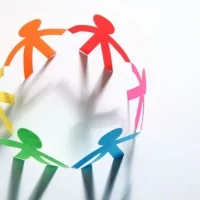This is an important section of the proposal as it presents the argument of why your project needs funding. It describes the issues and problems that a particular community faces and how your organization would address the given problem.
Many organizations also refer to this section as the project background or context, as it provides the reader with all necessary information about the project area. While writing the rationale of the proposal it is critical that you quote facts and figures as evidence to your problem. These facts can be from data that your organization has collected or can be from research articles etc.
Along with stating data to justify the project, you should also mention about why your organization is suitable to carry out the project (mention similar projects that you have implemented). Some points that should be considered while drafting the project rationale are:
- What is the problem?
- What are some important facts related to the problem?
- Why is your organization suited to carry out such a project?
- What are the key actions that you will carry out as part of the project?
- What are some expected results of the project?
There is no standard rule for writing the project rationale, but most experts consider that the following four elements should be covered by the rationale.
- Situation Analysis: This section should briefly explore the current situation of the area. You can quote facts about the problem in this particular section.
- Purpose: Here you should talk about why it is important to solve the particular problem and also what approach can be used to resolve the issue.
- Organization Strength: In this section focus on your organization’s strength and your past experience in resolving similar issues.
Example: The 2015 report estimates the total number of widows globally to be 258,481,056 – a 9% increase since 2010. Of these, it is estimated that 14.8% of widows live in extreme poverty where basic needs go unmet. Apart from financial, cultural, and social neglect, widows also undergo severe psychological and emotional trauma. Their problems are further aggravated by their inaccessibility to proper education, legal and social reforms. The problems faced by widows have far-reaching consequences in developing countries.
Women in Busia face similar problems as men in society tend to control them through the use of violence. The area also has significantly higher rates of polygamy and promiscuity which further enhances cases of high GBV. The proposed project seeks to usher 100 vulnerable women (widows and victims of all forms of GBV) from extreme poverty through entrepreneurship development in Busia County, Kenya. Empowering them towards economic development will not only facilitate improving the socio-economic condition of women but will also help in the betterment of the entire family.
Financial independence gained through entrepreneurship development will provide confidence to women and they will be able to avail their rights. The project will be implemented during a period of 12 months. This project aims at tapping the potential of women through investment in awareness generation, capacity building, and setting up of enterprises in the area. Considering the socio-cultural and financial needs of the villages, the proposed project is socially feasible, economically viable, and environmentally sound.
We have been working in the area for the last five years under our Women Empowerment initiative. The mission of ABC is to empower women in tribal areas through awareness and enterprise development. Over the last three decades, we are striving to empowering the illiterate and poverty-stricken people of this region and mainstreaming them into society.









































